
I think it’s about time for another brief tour around the place where I spend a lot of my time, my little garden. Obviously being small and in a city it doesn’t boast of an extensive large-species ecosystem, but I’ve spent the past +/- decade making sure it can host one on a smaller scale. Not that we don’t get larger creatures: jackdaws, doves, and magpies visit on the regular, hedgehogs shuffle around the back alleyways at night (I’ve yet to see one in my garden but I’ve found evidence that they do come in), gulls shriek past or eye me suspiciously from neighbors’
roofs. This post, though, is about the often overlooked understorey of our gardens, which I have sought out for you.
Like the previous garden circuit, I’ll base this one on a selection of photos I’ve taken over the past couple of weeks. This will be far from the only such post: I won't be able to touch upon more a few of the wondrous, vital little creatures that teem out there, creating and maintaining the soil that supports the plants that clean and reinvigorate our air, pollinating the flowers, recycling dead material, thrumming or buzzing or chirping, scuttling or crawling or flying or burrowing or leaping about, for the most part unremarked.
Let’s start with the powerhouse of nature, the engine that drives most of how the macroscopic crust-dwelling half of life on Earth does business: the honey bee. Honey bees, essential to our global ecosystem, have been exploited by mankind for as long as there has been mankind.


Before, during, and surely after this span, many other creatures have learned of their secret caches of that wonder food, honey, most notably bears. There are no honey bee hives in my garden, but I have filled it with things they love so I see dozens of them every day.
In addition to honey bees, here in the Netherlands we have over 350 other types of bee, of which 20 are bumblebees. To my great joy we have a colony of Tree Bumblebees (Bumbus hypnorum) in our honeysuckle this year! Their queen is simply enormous. Other types that regularly visit include White-Tailed Bumblebees and Early Bumblebees (like the one shown here), and I see still more and need to get assiduous about learning what they are.
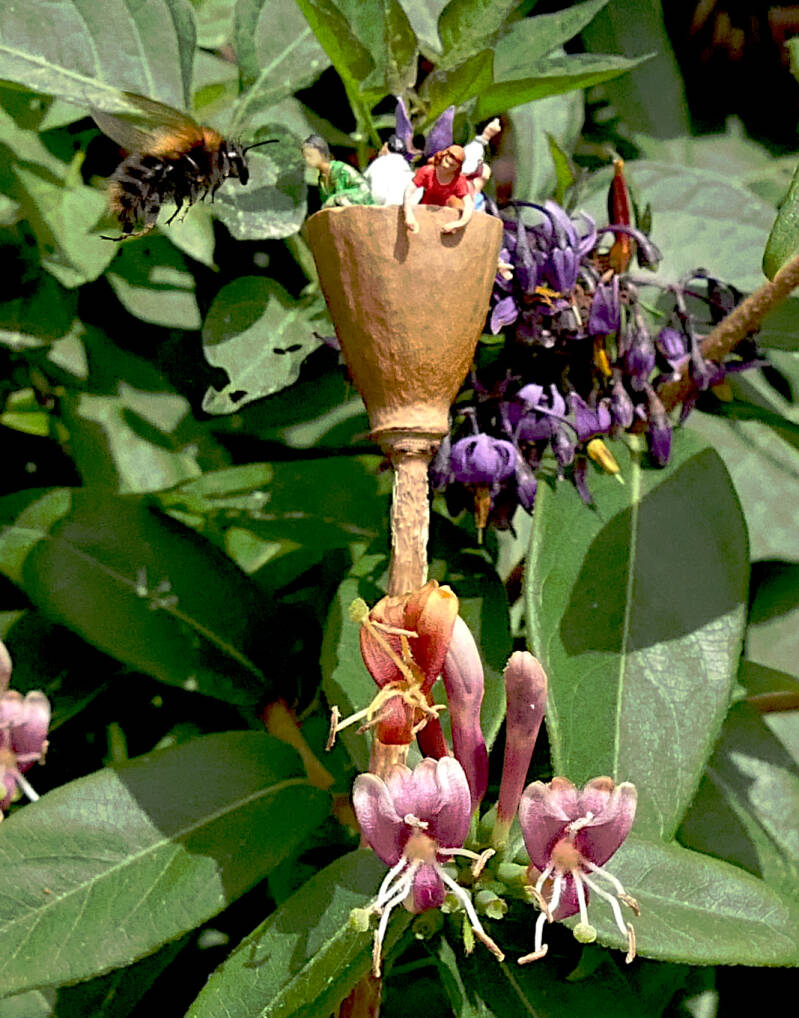

Everybody knows ladybugs, those adorable little trucks of the wild, the basis for so many children’s toys, poems, stories, and songs. Eating as they do smaller arthropods which can be harmful to our delicate, transplanted cultivars, they have long been known as a friend of Homo sapiens.
We find their colorful prominent shells so distracting we’re less disgusted,as a species, by them than we are by most other types of beetles, and in many cases they’re the only arthropod aside from a butterfly that people will tolerate having “on them”. I’m happy to see a great many out there this year, primarily among the bergenia, nigella, and, ummm, that purple stuff I’ve been too lazy to look up properly.

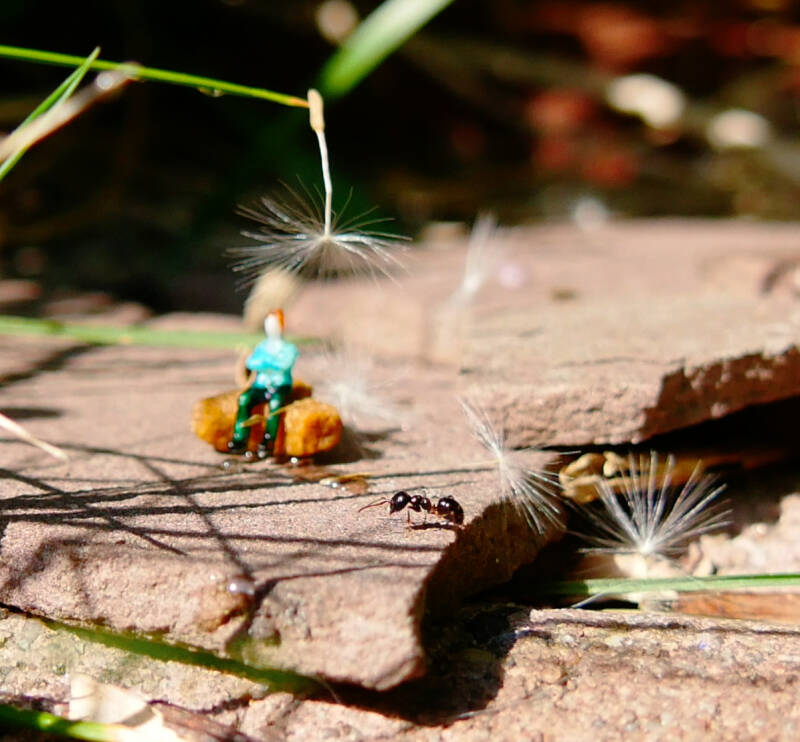
Ants come in so many types I’m not even going to try to go in that direction. I know there are at least four kinds thriving in my garden, and none of them is that pernicious smallish kind that loves so much to invade our home spaces.
The ones shown here are a bit larger but by no means what I would call a big ant species, and mind their own business around the edges of the lawn and in the borders, neatly removing dead insects, mice, birds, and whatnot.
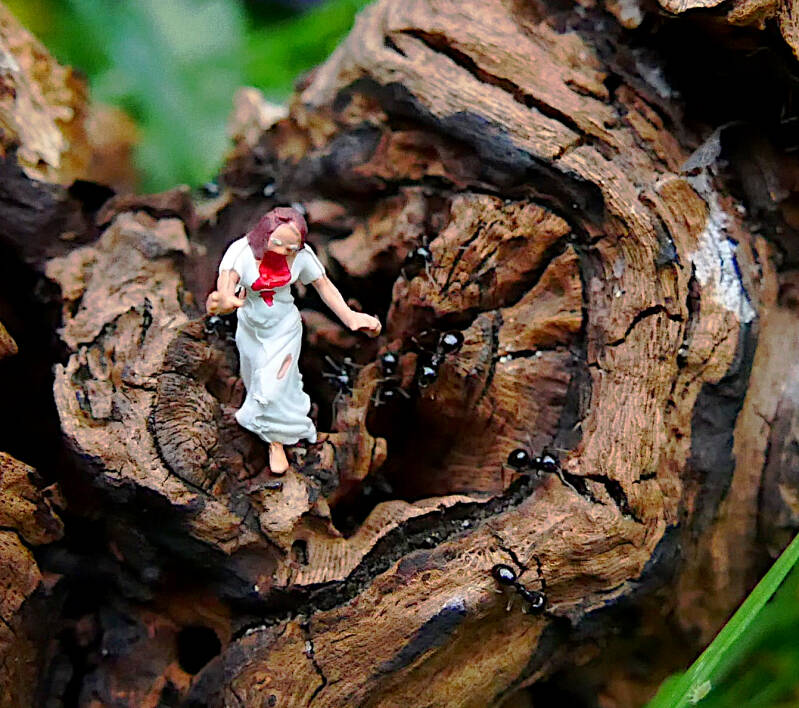
Many people have an unnecessary, misplaced horror of spiders. I love the danged things. Without them, we’d be up to our eyeballs in insects, and besides, they’re amazing pinnacles of natural evolution, often very colorful, and, unknown to most humans, also frequently, especially in the hunting rather than ambush types, display a strong sense of curiosity.

My garden hosts a great number of wolf spiders, so swift and wary they usually go unseen. With patience, I’ve been able to get close to a few of them. This first picture is a male.
In the next photo we see a female carrying her eggs. Unlike nearly all other arachnids, wolf spiders tolerate each other socially, and the females bind their egg sacs to their bodies, carrying and protecting them until they hatch.
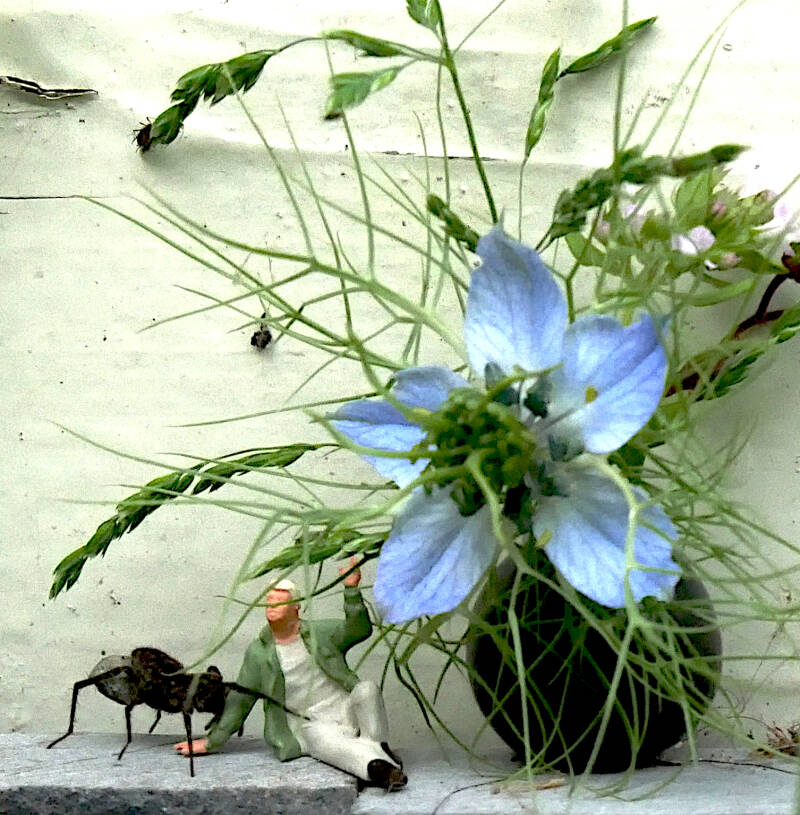
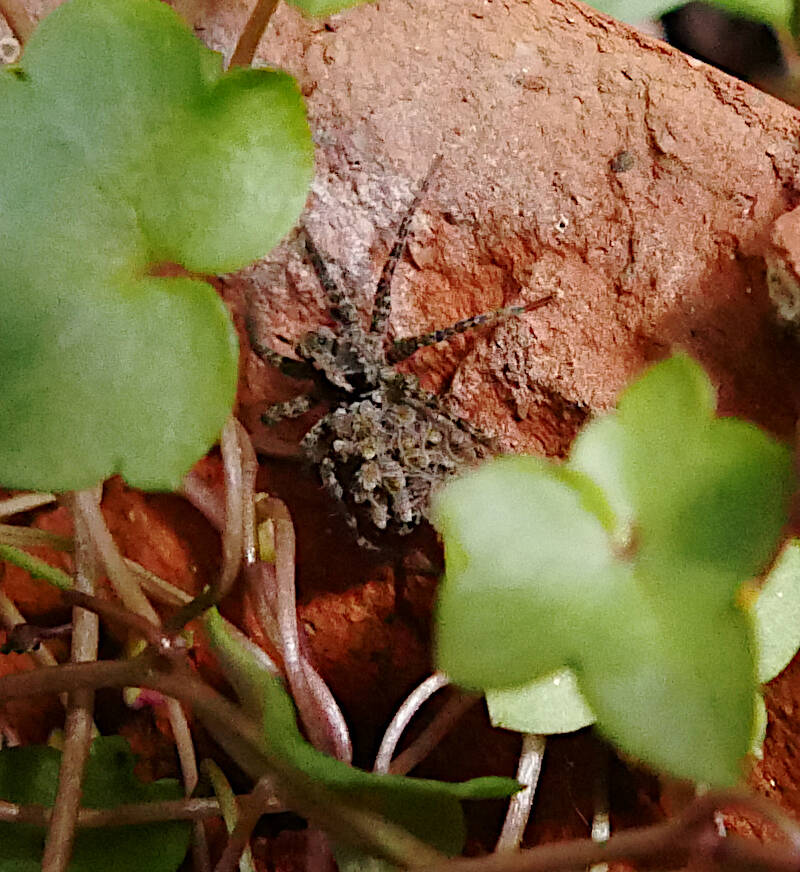
Then the babies all climb onto their mother’s back, where they will ride around, as in this very poor (sorry) picture, for up to several months living off the yolk sacs they were born with. As they eventually get hungry, they will drop off and go hunting, never to look back.
This year it appears we have grasshoppers! Green ones, brown ones, kind of orangey ones, and several combinations. This green one was a remarkably chill insect and tolerated my photographic efforts with aplomb. These fellows eat a lot of different things, from plant material to spider crap,


but everyone has known since well before the first Biblical plague of locusts that grasses are their favorite. That said, “mine” are not out there mowing the lawn to smithereens; there's something they really like about the bergenia patch and most of them are in there.
Another polyglutton species is the earwig. They eat lichens, moss, live-caught prey such as isopods or aphids, pollens, you name it. This is a very young one. They can mostly be found under things where there is plenty of detritus such as wood rot or old fallen leaves.


Garden isopods – sow bugs, roley-poleys, pill bugs, what have you – eat vegetable matter. They’re extremely useful in converting rotten wood into useful soil components. They can be found, usually in profusion, pretty much everywhere moist under pretty much anything out and around the garden, and come in a variety of colors and a few types. The word “isopod” means “feet all the same”.
The centipedes we have here are red, and they're mildly venomous, but very small. Centipedes are strictly carnivorous, eating small insects, mites, aphids, and even baby snails. Sometimes I come upon accidentally charming little piles of tiny snail shells and I think it’s these guys doing it.
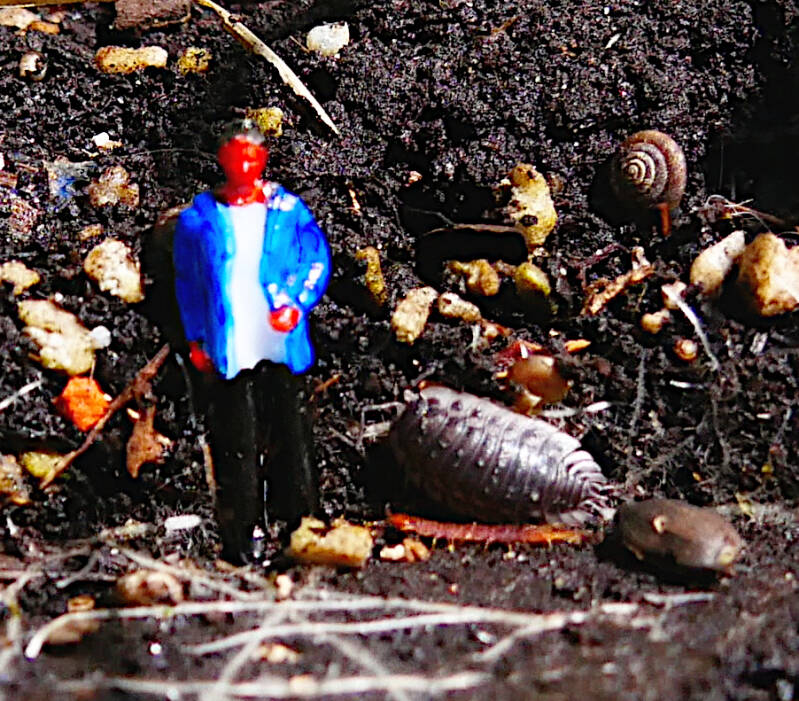
Let’s close off with one of the most universally hated animals on the planet, despite its tireless work to keep the planet rid of rotting matter: the humble house fly. Thanks to the number of cats that use the alleyways and shrubberies of the neighborhood to distribute their own waste material, we see quite a few of these guys in warmer weather. Here are some of my favorites of the pictures I’ve taken of them.
Stay well, folks, and take cheer in the things around you.

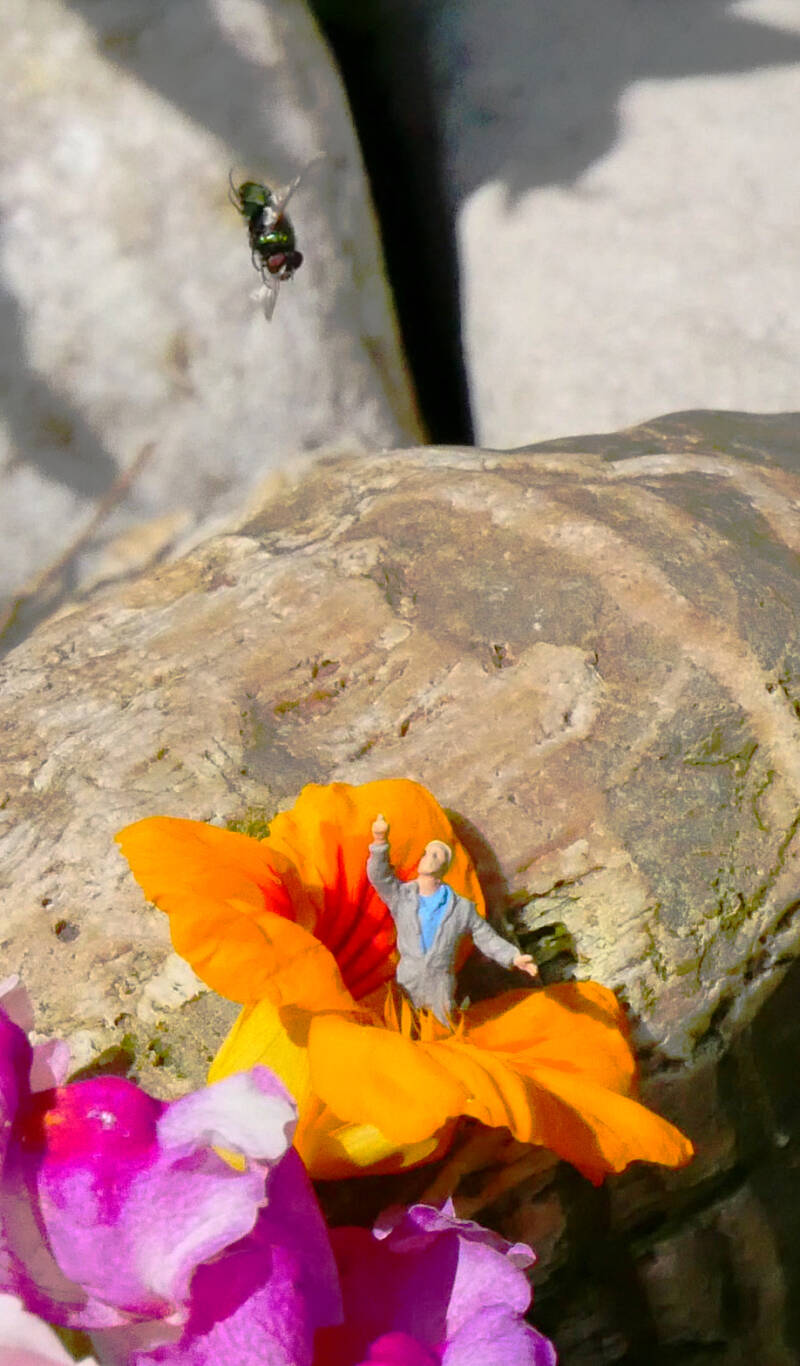
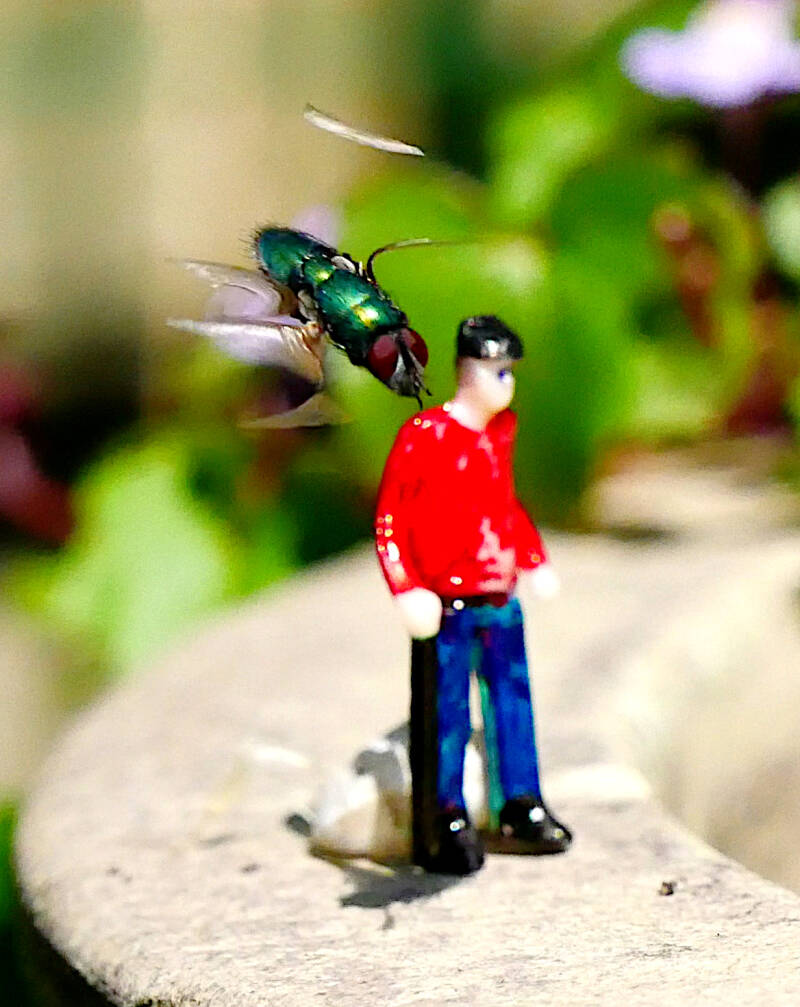
Add comment
Comments